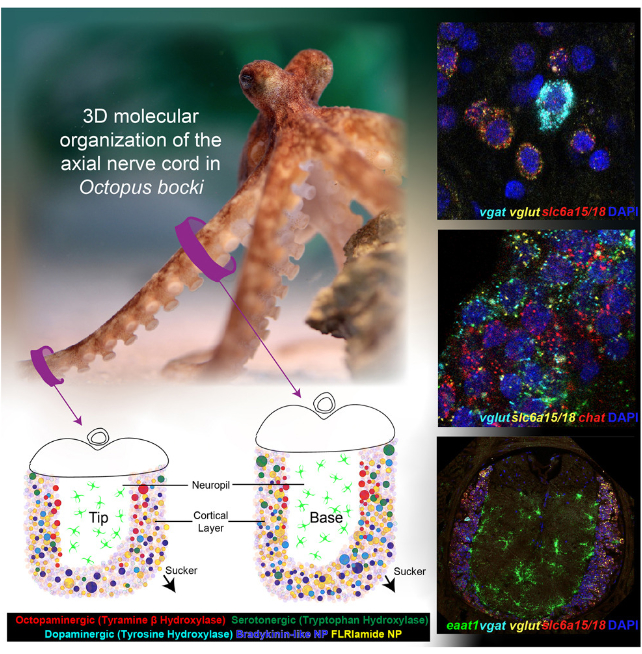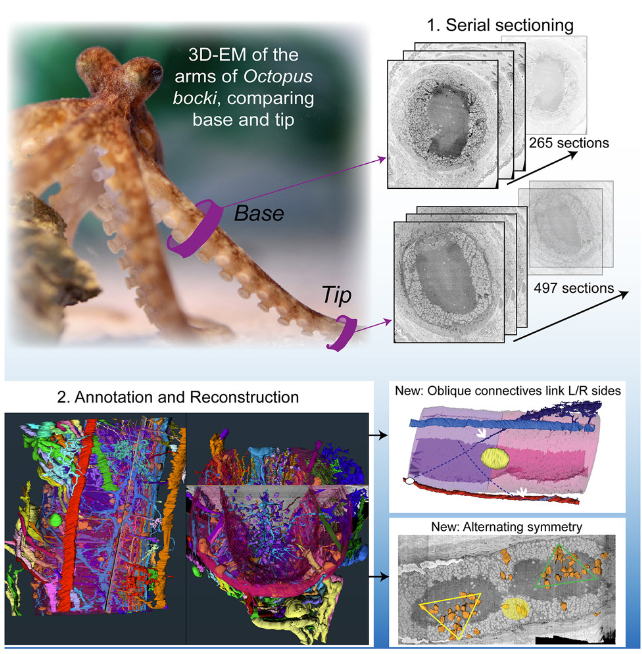Compared to the arms of an octopus, our bony limbs are about as flexible as old tree branches. It stands to reason that the anatomy of cephalopods’ sucker-spotted appendages should be as unique as the animals themselves.
Mapping the weave of nerves and muscles in octopus arms has until now been challenged by the complexity of the task, limiting studies to collecting two-dimensional slices and guessing how they might fit together.
Now, two studies from the laboratory of evolutionary biologist Robyn Crook at San Francisco State University have revealed an unprecedented level of detail in the tissues of what some claim is the closest thing to life. an alien on Earth.
“Having [these two papers] converging at the same time means that the amount we can learn from a single experiment is simply astronomically higher,” says Crook.
“I would say these articles really make it easier to discover new ways.”
Watching an octopus search for prey is like watching ink flow with determination. Devoid of bones, its musculature deforms, twists, extends and achieves a balance of strength and dexterity practically unmatched in the animal kingdom.
Previous studies have provided insight into the interactions between oblique and longitudinal muscles and how hundreds of millions of neurons come together in groups, called ganglia, to give each arm its own level of control, like the soldiers of a well-disciplined, loyal unit. to the cause while being able to resolve problems individually.
But just as the human brain is a network of various classes of neurons operating under the direction of a wide variety of neurotransmitters, the nervous system of octopus arms should have a level of neurochemical organization that allows it to move, feel and to think with a certain degree of autonomy.
Crook and his team undertook two separate investigations to reconstruct the arrangements and classifications of the nerves that run through the arms of Bock’s pygmy octopus (Octopus bowl) specimens.
One experiment, led by neuroscientist Gabrielle C. Winters-Bostwick, used a form of DNA technology to mark and identify distinct types of nerve cells. Taking high-resolution images of the arms from end to top with a recently acquired state-of-the-art microscope showed how each class of nerve cells was distributed in three dimensions, revealing distinctions in their populations throughout the limb.

“This allows us to start hypothesizing and asking new questions about how cells communicate with each other,” says Winters-Bostwick.
“It’s basically about building our arsenal and toolbox to better understand octopus behavior and physiology.”
A second investigation, led by biologist Diana Neacsu, applied electron microscopy to reconstruct the architecture of neurons, muscles and skin, demonstrating how different tissues connect and interact.
The alternative 3D map revealed surprising patterns in the animal’s cortex, oblique connections of intramuscular nerve cords, repeated structures containing nerve ganglia and blood vessels, which corresponded to the positions of the suckers, and a curious arrangement of cells rare and oversized nerves in the cell layers.

Having an atlas of octopus anatomy is just the start of learning how a mollusk behaves in such a relevant way, having followed such a distinct evolutionary path.
“Why do you have an animal with so much complexity that doesn’t seem to follow the same rules as our other example – humans – of a very complex nervous system?” Crook said.
“There are a lot of hypotheses. It could be functional. There could be something fundamentally different about the tasks that octopus arms have to perform. But it could also be an evolutionary accident.”
This research was published in Current biology here and here.



